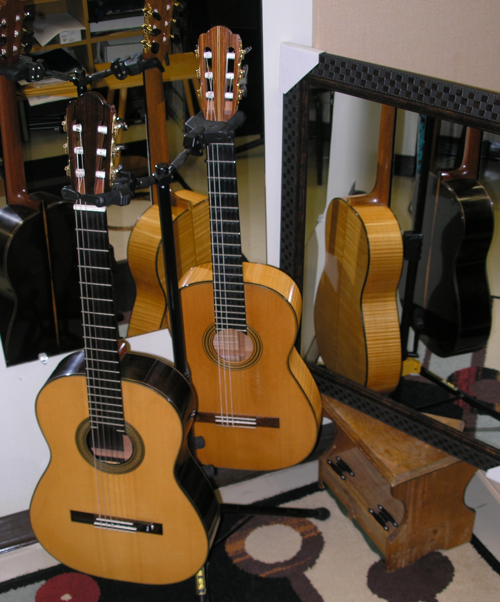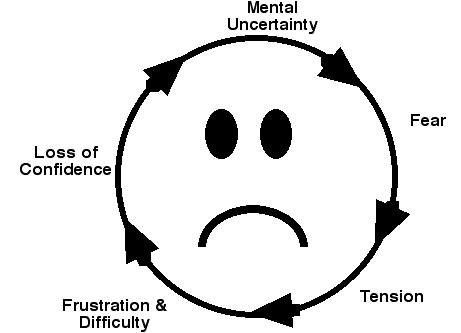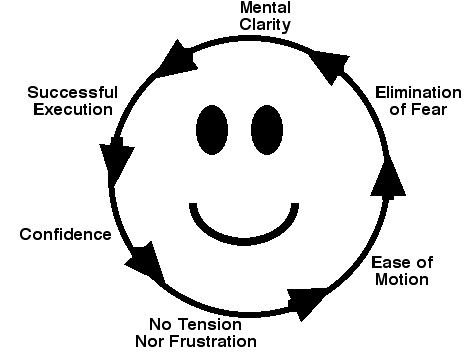

“A What'ronome..? Oh, that thing... Man, they're scary...”; “It makes me frustrated...”; “It just confuses me...”; “The Clicky Box! Noooo! It's Evil...!!”; “I think mine's broken – it keeps speeding up and slowing down...”
I
have to confess to there being a time in my teaching life when I'd hear
these quotes often, much to my discouragement: I was striving to foster
a desire in my young charges to play at the best of their ability, in
order to extend it; I wanted to nurture their self-confidence in a safe
yet challenging environment, and I knew that the metronome would
eventually play a crucial role in the development of this environment:
- It reinforces the concept of a steady external pulse (One that
usually doesn't square with the student's natural internal pulses),
which enables competent and confident playing in both solo and ensemble
contexts;
- It allows for a gradual progression in speed and velocity, and gives
teacher and student the means to monitor and assess ongoing progress;
- When used right, it allows the student to feel every necessary motion
in the fingers, arms, and shoulders in a steady, flowing beat,
enhancing his/her physical sense of beat subdivision.
The justifications for regular metronome use are manifold -
the fact that
you're reading this article suggests to me that you don't need them. It
can be frustrating for all involved, therefore, when the metronome
experience isn't nearly as successful as we wish it to be: at one time
or another, I was making one of three mistakes, all of which
contributed to my students' fear of using the metronome (a condition
that I'll call, for lack of a better name, Metronome Phobia):
1) In the interest of preserving the aforementioned safe environment, I
left the metronome out of the picture entirely, thus leaving the
student unexposed to a tool that will develop his/her ability in a way
that no other tool can;
Or:
2) I introduced and used the metronome in such a way that caused
sufficient fear and frustration that the student would approach future
metronome contact with apprehension. S/he failed to experience a
feeling of early success – worse, s/he took a memory of failure away
from the experience. Relieving some students of that baggage has been a
long process, and not a particularly happy one for all involved;
Or:
3) Both of the above – in some cases, I left it out of the picture for
too long and then introduced it in a “too much, too fast” manner.
The disparaging words directed at my friend the Metronome were coming
hard
and fast – the metronome, being just a box with a battery, was unfazed,
but I was starting to get a bit down on myself about it. I Googled the
keywords “metronome” and “success”, and the phrase “how to use a
metronome” – I found a virtual metronome online, and many, many sites
that offered to sell me a real one. Suffice to say, these sites were
not immediately helpful (I already had a metronome, thanks). I also
found several articles on-line that addressed the importance of using a
metronome when practicing. The basic message of these articles was,
“Get a metronome and use it!” Again, not particularly helpful, for the
simple reason that anyone sufficiently in the know to look for such an
article doesn't need that message.
A few other articles give the reader a succinct yet accurate idea of
how
to use a metronome successfully: in a ten-line article on her website,
a banjo player named Angie Sumpter provides a valuable insight, that
being to learn to play evenly and smoothly on a quarter-note pulse
before trying to subdivide it - this insight is shared by several other
commentators online, but this is hardly an in-depth analysis, and
neither she nor they seemed to address the issue of why the metronome
can be such a scary thing for young musicians in the first place.
Happily, my program's metronome journey, while still ongoing, has been
a
positive one of late. I found myself with a large chunk of free time
while waiting for a train in Minneapolis this spring, so I figured that
it was time to get some of my thoughts on this journey down on laptop...
Before getting into the “how-to” of metronome use in practice, it bears
considering why we practice in the first place. Those of you that have
read Ed Sprunger's book Helping
Parents Practice
will certainly know the answer: we practice to make whatever we're
playing feel easy. This suggests to me that if whatever we're
practising feels hard, we're either doing too much, or doing it too
soon, or doing it too fast, or a combination of all of the above. If we
haven't yet found a way to make it easy, we need to spend more time
seeking that means of ease.
I find this an insight worth dwelling upon before seeing how it applies to our friend The Clicky Box. I think it's fair to say that the student who utters any of the quotes that begin this article is experiencing a degree of mental uncertainty – during practice, mental uncertainty is dangerous, because it causes fear. Fear teaches our brain how hard something is by manifesting itself in the muscles in the form of tension. Tension makes what we're doing harder, not easier, and nurtures a mindset of frustration and difficulty. This, of course, is cyanide to the student's confidence, and certainly won't improve his/her mental clarity. An unfriendly circular situation has developed:

It occurs to me that we should strive to make the circle spin in the opposite direction: Having a clear mental idea of the task that s/he wants the muscles to execute (no matter how small or slow that task is) helps the student successfully accomplish the task with confidence; this success precludes the onset of muscular tension and mental frustration, makes the task feel easy, and above all, eliminates the fear – and so the circle of success continues:

There's no questioning the rationale of practice as a means of making a passage easy. I think it fair to say, moreover, that a deeper goal towards this end is to eliminate the fear that inhibits this ease: as musicians, we practice to eliminate fear, and encourage our students to do the same. Under no circumstances should the metronome (or anything else in our practice, for that matter) be a source of fear – rather, it should be a part of the solution to fear.
In his book Effortless
Mastery,
jazz pianist Kenny Werner emphasizes the elimination of fear, via his
concept of the Learning Diamond. The uppermost corner of the Diamond is
Effortless Motion; the three lesser corners are associated with Speed,
Size of Excerpt, and Accuracy.(1)

According to Werner, we practice a passage or technical concept in order to reinforce the relationship between the four corners, but only with a mind for three corners at a time, one of which must be the Effortless Motion corner. If a passage is difficult, eliminate one of the other three corners: play it as slowly as necessary (which I interpret to also allow for as flexible a pulse as necessary) in order to get all the way through with correct pitches, rhythms, and fingerings; play as small a chunk of the passage as necessary in order to get the correct pitches, rhythms, and fingerings at tempo; or (as a preparation for the performance mindset, and as a reward for an extended period of hard work), trust your fingers to get all the right pitches at the right times, play the whole passage at tempo, and accept the ensuing result for what it is, whatever happens.
I read Effortless Mastery at a time in my Masters' study when I really needed a change in mindset, and Werner's Learning Diamond resonated with me – so much so that I turned it into a Venn diagram:

The reader will notice that the bold-edged Comfort circle is central to
the whole concept: this is the Primary Field. Working in the dark zones
outside of that field is defeating the purpose of practicing. The best
results are found in the lightly-coloured Practice Zones, where any two
lesser circles intersect with the central circle of Effortless Motion.
These are the zones where the most work gets done with the least amount
of fear, and these are the zones in which the student needs to stay in
order to nurture confident growth, because these zones constitute the
pathways to the centre of the diagram, the coveted Performance Zone,
where all circles converge within the Primary Field of ultimate
confidence and comfort. If something is causing the student to leave
the Practice Zones and veer into the dark areas of the diagram, then
whatever it is needs to be either repackaged, broken down into its
component steps, or removed from the picture altogether until such a
time that the student is able to process it.
Next Installment: How does the metronome fit in to this picture?
The previous half of this article dealt with the rationale of why we
practice, and some general thoughts pertaining to the elimination of
fear. The second installment incorporates these thoughts into making
day-to-day metronome use a positive experience.
When I did Book 1A (and other training units) with Frank Longay, he
impressed upon us young teachers the importance of Experience preceding
Concept – in other words, Make it a Body Experience before a Mind
Experience: get the child to execute a task before saddling him/her
with the intellectual burden of the task. With that in mind, I'd like
to share some ideas for metronome introduction that have come to me
over the past few years via training units with numerous Suzuki
pedagogues and on-the-ground experience...
To start, it's worth noting that there's a great deal of pre-metronome
work to be done – to once again to defer to the wisdom of Ed Sprunger,
“I don't encourage students to play with a metronome until they can
really sense the pulse in their bodies."(2) Pulse progress can be made
with various activities that help the student to feel a beat – any beat
- in his/her body, and begins before the child even starts to play. The
human body has its own sense of pulse, which has little or no relevance
to any pulse beyond it. Turning an external beat, regardless of the
source, into a body experience is a good place to start:
- Echo-Clapping, à la the My-Turn-Your-Turn
Game – Twinkle rhythms, of course, are especially relevant here;
- Clapping the rhythms of the early repertoire with the CD
- Marching around the room to the CD can be good fun, too!
The Body Canon activity came into my teaching repertoire after a
workshop with one of my choir mentors, Elizabeth Grant, who uses it as
an activity for reading development. The teacher carries out a series
of rhythmic motions somewhere on their body (clap twice, tap the head
twice, two knee-pats, etc); the student repeats the actions of the
teacher, two beats behind them. Pretty soon, the teacher can add the
extra challenge of a gradual accelerando.
When you think the child or class is ready, add the instrument to the
rhythmic picture. The Ball-Bounce Game is a favourite of my
Pre-Twinkle/Book 1 guitar class (Many thanks to Frank Longay for this
one): play an open G when the teacher bounces the ball. Once that's
easy, let the ball bounce for gradually a little longer. In addition to
working in the idea of an external beat, it also begins the development
of ensemble ability, and helps teach the child's fingers and brain the
important skills of timing and anticipation.
Depending on the child and the group dynamic, many of these activities
will need an extensive period of reinforcement before you're ready to
turn on the metronome. Once the kids start looking bored with them,
it's a good time to up the ante and start the Clicker clicking:
1) Walk or march around the room to the beat – pick a tempo to which
the
child can easily walk (something close to his/her own walking pace).
2) Echo clapping, Stage 2: “make the clicks disappear” (A tip of the
hat to guitar trainer David Madsen). The teacher claps first, and then
the student. After the child's first attempt at this game, the teacher,
in the interest of staving off Metronome Phobia, must smile and say,
“That was a wonderful attempt! Let's do it again!!” - no matter what the child's
first attempt sounds like! In my experience, quick tempos are more
forgiving that slow ones (I've heard this attributed to the child's
quick heartbeat – at any rate, the margin of error is far less
noticeable at the faster tempi), and short rhythms are easier to echo
than long ones, so start with easy-to-duplicate four-beat motifs
(Twinkle rhythms rule here, of course) at a setting of about 120 or so,
and work your way longer and slower from there.
3) Once #2 above is sounding secure, give it a shot while walking in
place (“put the clicks in your feet”), and then, for finer motor-skill
development, while toe-tapping to the beat (“put the clicks in your
toes”). Again, the guidelines of “faster, shorter” before “slower,
longer” apply.
4) Body Canon makes a return, except with the help of a parent or
older, more experienced student who is your “assistant”: start at a
comfortably-slow tempo, and have said assistant gradually edge the
metronome faster.
5) When it comes time to put the clicks in the fingers (or bow, or
facial muscles, depending on the instrument), I've had success with the
Pass-the-Note game – some folks might call this Musical Ping-Pong, and
works best when introduced in the pre-metronome stage: the teacher and
student play the same note back and forth on the metronome for a spell,
until someone falls off the beat (or “misses the ball”). This can
evolve into a Ping-Pong version of Moonwalk (for guitarists – teachers
of other instruments can insert their favourite Pre-Twinkle song here),
and eventually the opening notes of the child's early repertoire.
6) It bears reiterating that metronome work should always be done in
the student's comfort zone. The idea here is to expand that comfort
zone. By the time the child attains the 5th level of comfort noted
above, s/he is ready to start using the metronome as a tool for review:
start with the Twinkles (one variation per day on the metronome – if
that's too much, then do a variation in chunks, as small as
necessary to ensure success, with “thinking moments” inserted as
needed), and work your way up. This also helps the student develop the
discipline needed for daily technique practice, with which the
metronome will help for systemizing and gauging progress.
Some final thoughts on the Metronome:
- I tell my students the obvious (and not just for comic effect,
although
it does elicit the occasional giggle): make sure you switch on the
metronome! I know it's a no-brainer, but I think it bears mentioning
regardless. I tell them that using a metronome is like doing dishes or
exercising: once you're over the initial barrier of starting, it's not
that bad - after a while you don't mind it, and it feels great when you
finish!
- Use it as much as possible, in such ways that guarantee success:
- Small chunks are more manageable than big chunks;
- The bigger the chunk, the slower the tempo;
- Problems with subdividing? Double or triple the click speed – let the
metronome subdivide for you for a while;
- Know when to turn it off! You, not the metronome, are the boss – you
have the ultimate control of
the “off” switch. Think of your best, most trusted friend: you can
always count on that friend to be honest and forthright with you, but
sometimes you don't want that kind of blunt honesty. However, there are
other times when you find that friend's company to be just what you
need. The metronome is incapable of lying - that said, you're not going
to take your metronome out for coffee anytime. It's a tool that you own
– but it does not own you!
If the metronome is becoming the source of (as opposed to the solution
to) frustration, shut it off and save it for tomorrow.
The ultimate goal as I see it is to develop the comfort zone
sufficiently to allow the student to use the metronome during the
learning phase of a new piece. This is where metronome work really
starts showing its worth - to quote Dr. Sprunger again: “What
metronomes can do is help you organize
the learning process."(3) Now that the fear has been dispelled,
weekly tempo goals can be written in the music at specific teaching
spots and/or on practice charts; as mentioned, students can also
gauge their progress in their technical regimens. Additionally, the
metronome can now take an important place in the Practice-Circle scheme
of things, helping the student move his/her repertoire, one chunk or
phrase at a time, one notch at a time, towards the Performance Zone.
The student must be guided through the process of reaching that Zone,
and the metronome is crucial to this process. The more often the
student makes that trip, the easier the next journey there will be. I'm
happy to report that I've not heard any disparaging words about my
friend the Metronome in quite some time....
Footnotes:
1 - Werner, Kenny. Effortless Mastery: Liberating the Master Musician Within. New Albany, IN: Jamey Aebersold Jazz, Inc., 1996, pp. 161-2.
2 - Sprunger, Edmund. Helping Parents Practice: Ideas for Making it Easier, Vol 1. St. Louis, Ann Arbor: Yes Publishing, 2005, p. 215.
3 - ibid.